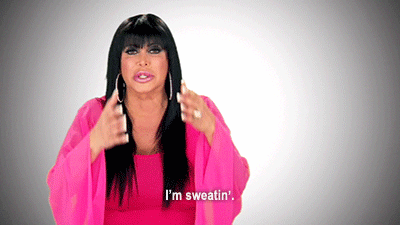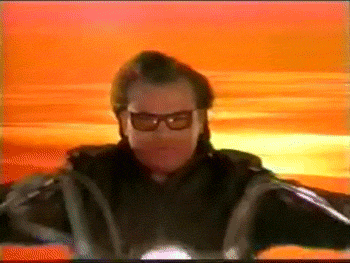Sometimes it seems like there are two extremes at the gym — someone is either in a puddle of their own sweat, or they are barely even red in the face and still rocking a perfect hairdo. Getting a nice, sweaty workout in feels like an accomplishment, but it may not be the best indicator of how much good you’re doing your body. We put so much emphasis on “working up a good sweat” that we do not feel satisfied until we are worthy of a long shower. A great workout is about so much more than how sweaty we are at the end of it. In fact, there are a number of scientific reasons some people come out of a workout looking as if they were just at a photo shoot.

GIF courtesy of gify.com
Our body is constantly working to cool us down because using our muscles throughout the day creates heat. To understand how our body cools us off, we need to revisit some key ideas you probably learned in elementary school regarding heat transfer.

GIF courtesy of gify.com
First, if the air around you is cooler than your body’s temperature, heat will escape out of the skin through radiation. Second, your body can get rid of heat by coming in direct contact with something else (say, water in a swimming pool) and transferring its heat through conduction. The third method, convection, relies on moving air to cool us down, like from an irresistible summer breeze. Evaporation is where sweating comes into play. Water in our bloodstream absorbs the extra heat in the body and rises to the skin’s surface. After escaping through sweat glands, we feel wonderfully cool after the sweat evaporates into the surrounding air.

GIF courtesy of gify.com
So many factors go into how much a person sweats. Your level of sweatiness is dependent on how old you are, how fit you are, what your gender is, and what environment you’re in. Women tend to sweat less than men, and older people tend to sweat less than younger people. This age difference may have some correlation with the fact that people tend to become less fit when they are older. While a more fit person does not necessarily sweat less than a couch potato, they are more efficient in the cooling process and would probably begin sweating sooner in their workout.

GIF courtesy of gify.com
As far as environment, a cool room will bring your sweat output down in a major way. When the air around you is cool, your body is more likely to use radiation first, and then when you do sweat, evaporation happens faster and you feel cool and dry in no time at all. Thats a major difference from how you feel on a scorching hot day where you can’t seem to wipe the sweat away fast enough. So sadly, while your hot yoga class may make you feel as though you’re burning off thousands of calories, your body is probably just having a hard time cooling down.

GIF courtesy of gify.com
Now let’s talk about what you really get out of your workout. As my wise Cardio Kickboxing instructor once said, “You get out of a workout what you put into it.” If you are movin’ and groovin’ in your chosen physical activity you’ve chosen, you are burning calories.
Any type of physical activity leads to heat production in your body, and heat production leads to calorie burn. What actually affects your workout’s value are intensity and duration. If you are working towards a more physically fit self, some great things to do are increase the level on the machine at the gym, up your weight (reasonably) when strength training, or trying a new and more challenging activity to switch up your usual routine. Increasing your workout duration is pretty straightforward, and just requires some extra determination.

GIF courtesy of gify.com
Being fit and healthy is not achieved only through seemingly endless cardio that may leave you just as soaked as a shower. It requires variation, engaging all your muscle groups, and sticking to it! In a perfect world, we would focus on what an exercise plan does for our body, rather than how many calories or pounds we have shed. So if you end your workout just as dry as you were in the beginning, don’t let that phase you. Simply getting out and being active does more for your body than it could ever show you through the pores of your skin.


